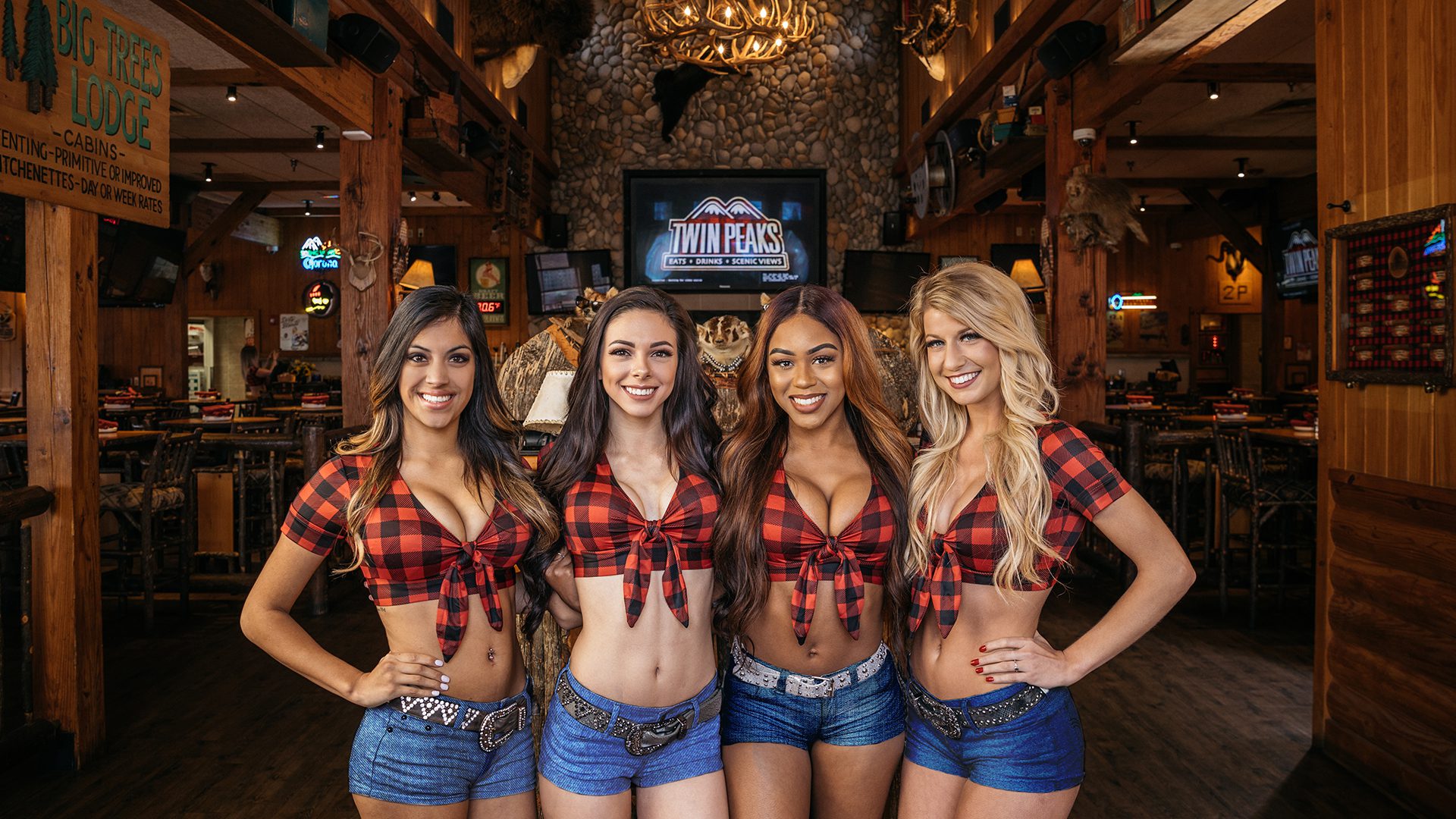Real Estate & Hospitality Pro Signs Multi-Unit Deal to Bring More Twin Peaks to Southeastern U.S.






Navigating a franchise agreement can feel daunting—but it’s a crucial step for any potential franchisee. This contract sets the stage for your entire business relationship.
A franchise agreement is a legally binding contract outlining the terms and conditions under which the franchisee is permitted to use the franchisor’s trademarks, brand, business model, and proprietary systems.
Whether you’re a first-time franchisee or looking to expand your portfolio, this guide will help you navigate the complexities of franchise agreements with confidence.
Understanding the key components of a franchise agreement is crucial for anyone considering entering the restaurant franchise industry. Each of these components plays a vital role in defining the relationship between franchisor and franchisee and ensuring the success of the franchise.
One of the first and most critical components of a franchise agreement is the franchise fee and initial investment. These are the upfront costs required to secure the rights to operate under the franchise brand. The franchise fee is a one-time payment made to the franchisor for the privilege of using their brand name, operational systems, and business model.
In addition to this fee, franchisees must also account for the initial investment, which can include costs for real estate, equipment, inventory, and other start-up expenses.
The initial cost of building a Twin Peaks restaurant ranges from $1,520,800 to $5,106,500. This includes all start-up expenses as well as the $50K initial franchise fee.
Territory rights determine where a franchisee can operate and the level of exclusivity they will enjoy within a specific area.
Exclusive territories mean that the franchisor agrees not to open another franchise location within the specified area. This exclusivity can provide a competitive edge by reducing direct competition from the same brand.
Non-exclusive territories, on the other hand, allow multiple franchisees to operate within the same region. While this can increase brand visibility and recognition, it also means that franchisees may face competition from within the brand itself.
One of the significant advantages of entering into a franchise agreement is the comprehensive training and support provided by the franchisor. Training programs equip franchisees with the knowledge and skills necessary to successfully operate their franchise, ensuring consistency and quality across all locations.
Most franchisors offer an extensive initial training program that covers various aspects of running the business. This typically includes modules on operations, customer service, marketing, financial management, and adherence to brand standards.
For new Twin Peaks franchisees, there is an initial 9-week training program at the Twin Peaks Training Center in Dallas. Additionally, we provide on-site pre-opening and opening training for a minimum of 14 days.
After the initial training program, franchisors provide ongoing support to help franchisees including marketing support, field visits, and networking opportunities like the annual Twin Peaks Idea Exchange conference.
Operational guidelines outline the standards and procedures that franchisees must follow to ensure uniformity and quality across all franchise locations. These guidelines may include customer service protocols, food preparation and presentation, inventory management, cleanliness standards, and safety practices.
Designed to replicate the franchisor’s successful business model, operational guidelines ensure that customers receive the same high-quality experience regardless of which franchise location they visit.
Maintaining consistency also extends to marketing and branding efforts. Franchisees must use approved logos, signage, and promotional materials to ensure that the brand’s image remains cohesive.
Effective marketing and advertising helps build brand awareness, attract customers, and drive sales. The responsibilities in this area are typically shared between the franchisor and franchisee, each playing a role in the overall marketing strategy.
The franchisor is usually responsible for orchestrating national and regional marketing campaigns. This includes developing and executing comprehensive marketing strategies that promote the brand across channels.
In addition, franchisors often provide franchisees with marketing materials and guidelines to ensure brand consistency. These materials can include everything from promotional flyers and social media content to in-store signage and email templates.
Franchisees are often required to contribute to an advertising fund to support national and regional marketing initiatives. At Twin Peaks, the Advertising/Marketing Fee is 2.5%.
While the franchisor handles the broader marketing initiatives, franchisees are typically responsible for local marketing efforts. This involves tailoring national campaigns to their specific market and engaging with the local community to attract and retain customers.
The duration and renewal conditions of a franchise agreement outline the lifecycle of the franchise relationship and set expectations for how and when the agreement can be extended.
The term specifies the length of time the franchisee is granted the right to operate the franchised business. This period varies depending on the franchisor but typically ranges from five to twenty years. Twin Peak’s initial franchise agreement term is fifteen years.
As the end of the franchise term approaches, franchisees often have the option to renew their agreement. Renewal conditions and processes are outlined in the original franchise agreement and may include several key requirements like performance criteria, operational standards compliance, renewal fees, and updated terms and conditions.
Having a well-defined exit strategy is essential for franchisees to navigate potential changes in their business circumstances or personal goals.
The franchise agreement outlines the terms and conditions for exiting the franchise system, including selling or transferring the franchise and the conditions under which the agreement can be terminated.
Franchise agreements typically include provisions for selling or transferring the franchise to another party. These terms outline the process for finding a suitable buyer or transferee and obtaining approval from the franchisor for the transfer.
The franchise agreement also specifies the conditions under which either party can terminate the agreement. These conditions may include breaches of contract, failure to meet performance standards, bankruptcy, or other legal or regulatory violations.
A successful franchise won’t trick you into signing a franchise agreement. At Twin Peaks, helping potential franchisees understand our franchise agreement is top priority. Ultimately, your success is our success, so we are actively searching for only the best applicants and potential future partners.
When you submit a franchise inquiry, we kick off a detailed process to ensure both sides are a good fit. After an introductory call and territory discussion, we’ll do our due diligence (and so can you) before you have the opportunity to meet our franchise team and visit local Twin Peaks locations.
Only then will we review the franchise agreement and make our partnership official. Follow the link for a more detailed outline of our franchise process.
Once you’re an official member of the Twin Peaks Team, you’ve got the influence and resources of the #1 Sports Bar on your side. We’ll be here to help you wield them—per our franchise agreement, of course.


The old saying, “Don’t put all your eggs in one basket” couldn’t be more true for restaurant franchisors. There’s real strength in portfolio diversity.
Owning complimentary restaurant concepts allows you to reach the same lucrative demographic multiple times without cannibalizing your sales. Many of Twin Peaks’ franchisees are multi-unit AND multi-brand operators.
Twin Peaks Restaurants is an unexpected yet intriguing addition to your portfolio mix. Unlike your typical investment venture, Twin Peaks offers a unique blend of culinary and beverage excellence, sports entertainment, and a die-hard customer base.
Together, let’s explore why Twin Peaks Restaurants is a great franchise diversifier for investors.
When considering diversification within a franchise portfolio, the key is to find concepts that complement each other, maximizing market reach and appeal. Here, Twin Peaks stands out as an ideal addition to any franchise portfolio.
With its distinctive blend of sports, scratch dishes, drinks and the iconic Twin Peaks Girls, there’s truly no other concept quite like it. This unique offering appeals to a broad demographic, from sports enthusiasts looking for the ultimate game-watching experience to customers seeking a premium bar to unwind at after a long day.
Pairing Twin Peaks with a family restaurant or a fast-casual dining concept can attract different segments of the market. Similarly, integrating Twin Peaks into a portfolio that includes other entertainment venues can enhance the overall entertainment value and draw in a broader audience.
Twin Peaks can seamlessly complement a variety of other restaurant concepts, enhancing the overall appeal of a franchise portfolio.
In the restaurant industry’s evolving landscape, staying attuned to market trends is essential for sustained success. One notable trend in recent years has been the growth of the bar and spirits category, presenting a strategic advantage for concepts like Twin Peaks.
The rise of craft cocktails and premium spirits has transformed the bar scene into a focal point for socializing and entertainment. Consumers are increasingly seeking unique and high-quality beverage options, driving demand for innovative bar concepts.
Twin Peaks is well-positioned to capitalize on this trend with its extensive beverage program and emphasis on quality drinks. From hand-crafted cocktails and 29° draft beers to an impressive selection of bourbon and tequila, Twin Peaks offers a diverse and elevated beverage menu that appeals to discerning drinkers.
By leveraging the momentum of this trend and continually innovating its beverage offerings, Twin Peaks remains at the forefront of the bar and restaurant industry, poised for continued growth and success.
Another factor that sets Twin Peaks apart is our fans. Sports fans flock to Twin Peaks not just for the games, but for the whole experience of great food, drinks, and wall-to-wall scenic views.
Unlike seasonal dining trends, sports provide a year-round draw that keeps customers coming back week after week. From playoff football to the global appeal of soccer tournaments, every day is game day at Twin Peaks.
Sports seasons at Twin Peaks complement other franchise concepts that may have their own peak periods. While another restaurant might see higher traffic during holidays or school breaks, Twin Peaks can maintain a steady customer flow at other times of the year. This helps ensure a balanced and diversified revenue stream across your portfolio.
Twin Peaks has also cultivated strong brand loyalty among its customers. The brand’s ability to foster a sense of community keeps customers coming back, turning first time guests into die-hard fans.
This loyalty extends beyond the customer base to the franchisees themselves. Most Twin Peaks franchisees are multi-unit operators who recognize the value of the brand’s loyal following and its ability to drive consistent business.
Throughout its history, Twin Peaks has weathered economic downturns and emerged stronger each time. The brand’s ability to adapt and thrive during challenging periods is a testament to its strong business model and loyal customer base.
Whether it’s through strategic menu adjustments, cost management, or innovative marketing campaigns, Twin Peaks has consistently found ways to maintain profitability and continue attracting customers, even when the broader economy faces turbulence.
A low closure rate underscores the brand’s effective support system, strong operational model, and the high demand for its unique dining experience, as well. Investors can rest assured that Twin Peaks offers a lower risk of failure, making it a safer and more attractive franchise opportunity.
Another significant indicator of Twin Peaks’ success and stability is the number of multi-unit operators within its franchise network. Most franchisees have chosen to invest in multiple Twin Peaks locations, reflecting their confidence in the brand’s performance and potential for profitability.
In the quest for portfolio diversification, investors should always be on the lookout for innovative opportunities. Twin Peaks Restaurants offer a compelling blend of stability, growth potential, and experiential appeal that makes them a standout choice for those seeking to broaden their investment horizons.
By adding Twin Peaks to your portfolio, you’re not just investing in a restaurant chain; you’re tapping into a unique asset that promises both financial returns and a flavorful journey into the world of restaurant hospitality.